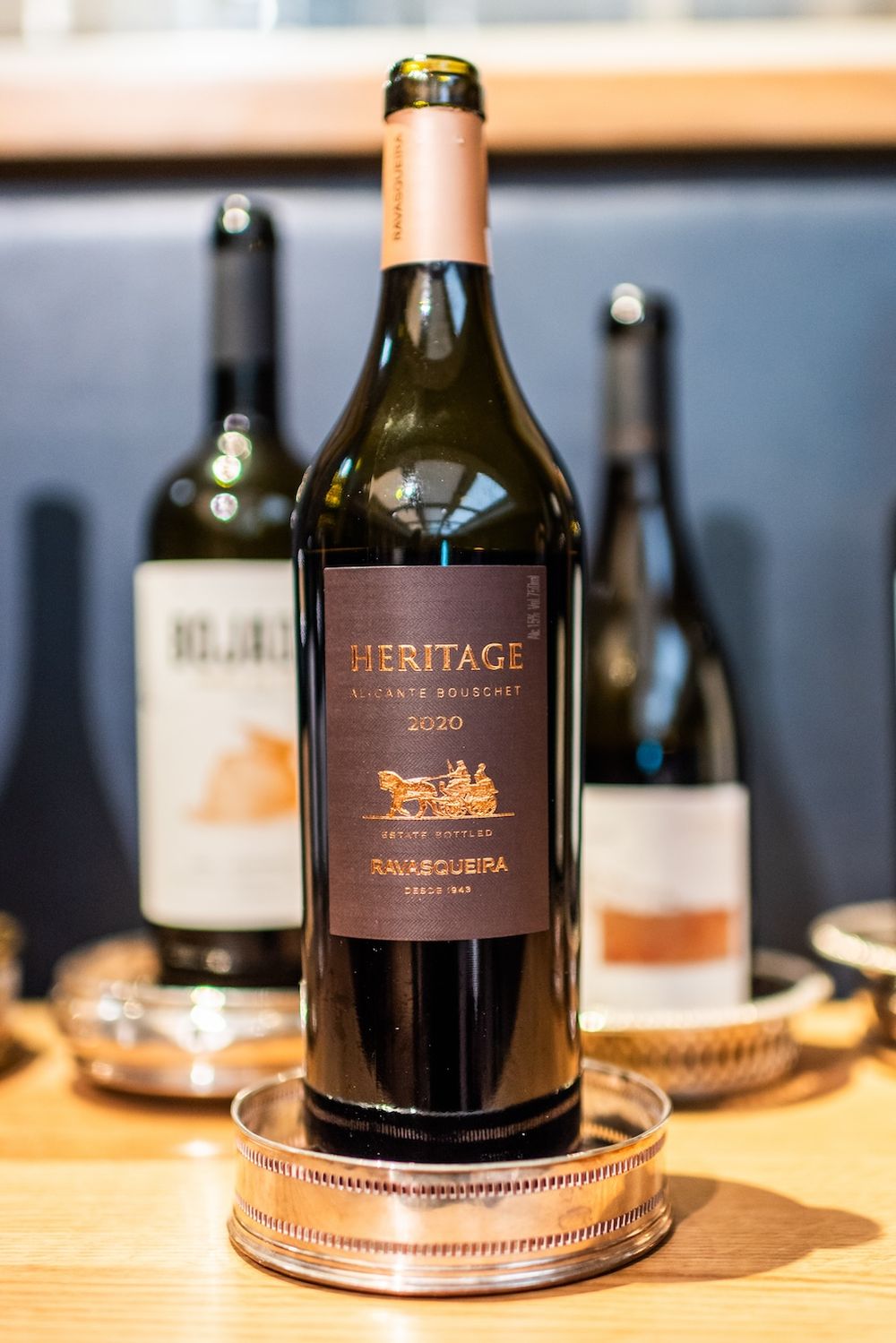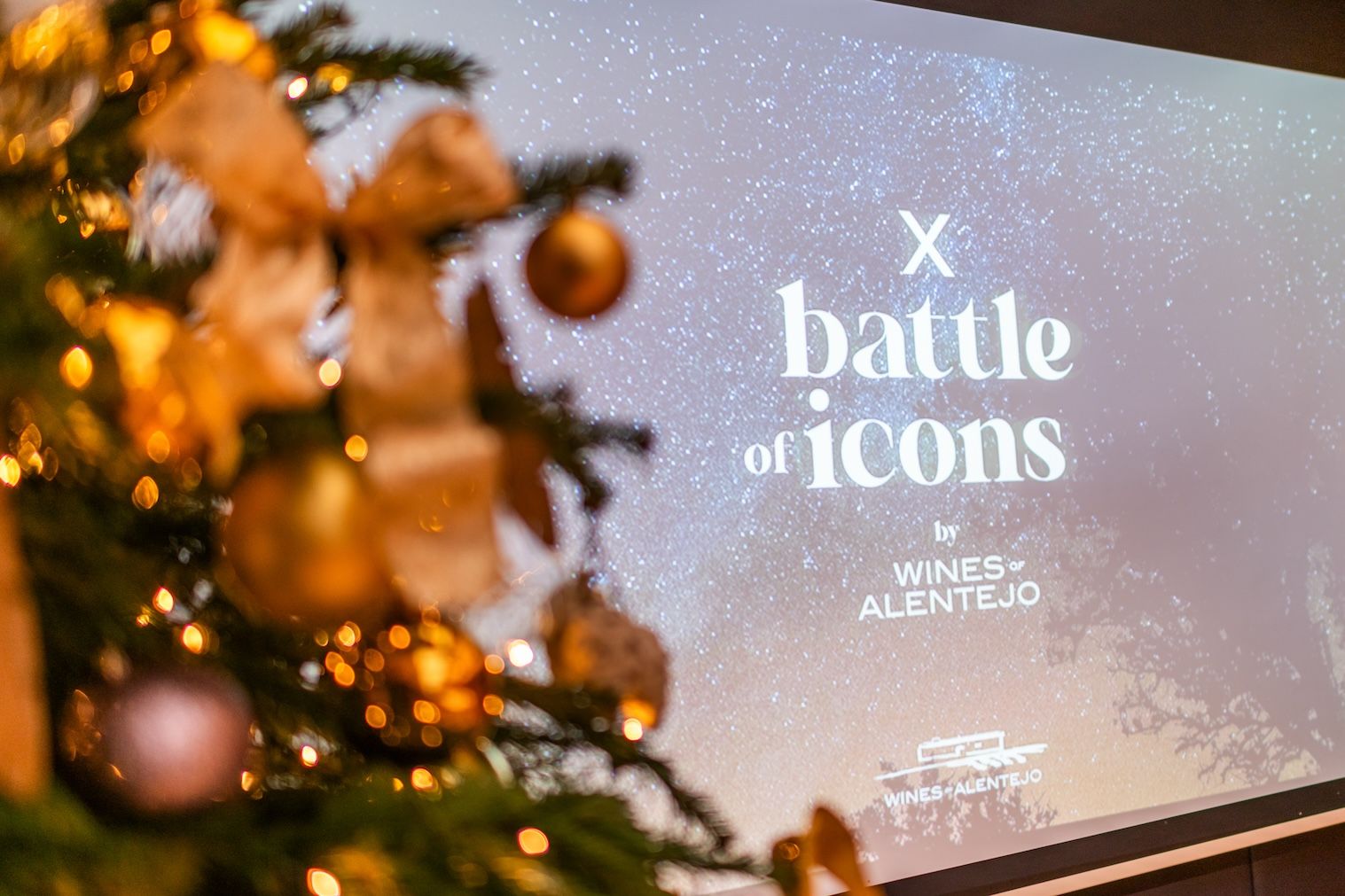Alentejo, the sun-soaked region in southern Portugal, took centre stage at the Battle of Icons event at 67 Pall Mall in London on December 4th, 2024. With its rolling vineyards, rich history, and innovative practices, Alentejo is emerging as a global contender in the world of wine. The event, hosted by Wines of Alentejo, brought together sommeliers, restaurateurs, and industry experts for a blind tasting contest designed to showcase the diversity, quality, and heritage of this remarkable region.

Rodolfo Tristão: Alentejo isn’t just a wine region it’s a way of life
We were guided by Rodolfo Tristão, one of Portugal’s foremost sommeliers and a former president of the Portuguese Sommelier Association, the event featuring wines handpicked to represent Alentejo’s distinctiveness. Each selection highlighted a unique facet of the region, from rare native varietals like Rabo de Ovelha to bold blends featuring Alicante Bouschet or Moreto.
“In curating this line-up, I wanted to showcase the true essence of Alentejo – its ability to honour tradition while pushing boundaries,” Tristão explained. “These wines reflect the land, the people, and the incredible potential of the region.”
The Alentejo region: a land of diversity and heritage

Alentejo’s success lies in its authenticity
As Portugal’s largest wine-producing region, Alentejo covers nearly one-third of the country. Despite its size, it accounts for just 0.3% of the world’s wine production, underscoring its focus on quality over quantity. The region is defined by diverse landscapes, encompassing olive groves, cork forests, and 23,467 hectares of vineyards, where over 250 native grape varieties thrive.
While Brazil is Alentejo’s largest export market, the region’s wines are gaining recognition worldwide for their balance of tradition, sustainability, and modern innovation. As Paula Nunes, Wines of Alentejo’s marketing representative, noted, “Alentejo’s success lies in its authenticity. Our wines reflect the care and passion of the people who produce them.”
Battle 1: White wines of Alentejo
The first flight showcased the breadth of Alentejo’s white wines, from rare native varietals to modern classics.

Wine #1: Rabo de Ovelha, Casa Relvas 2023
Rabo de Ovelha, a rare native grape, originates in Vidigueira, South Alentejo. Casa Relvas manages 750 hectares of forest, 250 hectares of olive groves, and 350 hectares of vineyards.
This wine was a stand-out with its slightly obscure nose, fresh and mineral-driven with notes of orange blossom, cardamom and sea air. Paired with scallops, its tangy acidity was a perfect match. 11% ABV. Importer: Raymond Reynolds
“Rabo de Ovelha is not just a grape – it’s a reflection of Alentejo’s resilience and commitment to sustainability,” said Nunes.

Wine #2: Paço dos Infantes, Antão Vaz 2022
100% Antão Vaz, from an estate originally intended for olive groves where meteorological stations and soil sensors ensure efficient irrigation and soil health. Portuguese white classic, with aromas of citrus, peach and floral elegance, with structured acidity. Buttered prawns complemented the wine’s rich texture and vibrancy. 12.5% ABV. Importer: Festa Wines
“Antão Vaz is one of Alentejo’s most renowned white varietals, and this vintage shows why,” noted Tristão.

Wine #3: Reserva do Comendador, Adega Mayor 2022
A joyful blend of 70% Antão Vaz, 20% Viognier, 10% Verdelho with allspice, and citrus tang and a doughy character, precision, focus and charm.
Paired with salmon caviar and cream cheese, its elegance, broad palate and pithy finish stood out. 13% ABV. Importer: Atlântico UK
Battle 2: Reds with a sense of place
The second flight highlighted Alentejo’s red wines, focusing on ancient grapes and winemaking techniques.

Wine #1: Moreto – Chão dos Eremitas, Fita Preta 2022
Made from Moreto, a grape perfectly adapted to Alentejo’s heat and drought conditions, a perfect example of Alentejo’s ability to adapt, as this variety thrives where others struggle.
Aromas of ripe black fruit and forest floor lead to a concentrated palate, balancing freshness and persistent structure. 13.5% ABV. Importer:
Swig Wines

Wine #2: Bojador Amphora Wine 2023
A truly Portuguese blend of Trincadeira, Tinta Grossa and Moreto. Made using the ancient talha method, this wine is fermented in clay amphorae, a technique dating back to Roman times. Umami-driven and earthy with black cherries and supple tannins. Mushroom tarts brought out its delicate complexity and matched the wines’s earthy notes. 13% ABV. Importer: Davy's Wine Merchants
“Talha wines are a living connection to the past, and Alentejo is leading their revival,” explained Nunes.

Wine #3: Alfrocheiro, Monte da Capela, Casa Clara 2020
Made from 70 hectares of vineyards, this wine highlights Alfrocheiro’s versatility.
100% Alfrocheiro. Rich red berries, blackberry and nutmeg. Balanced and long, with a tangy finish and a well-defined tannin structure. Paired with beef, the richness of the red meat created perfect roundness on the palate. 13.5% ABV. Importer: Marta Vine
Battle 3: The classics
The third and final flight showcased Alentejo’s ability to produce bold, structured, and age-worthy red wines from its warmer sub-regions, featuring powerful yet balanced profiles.

Wine #1: Moreto, Abegoaria dos Frades 2022
100% Moreto.The vineyard is located on the left bank of the Guadiana River, an area marked by intense sunshine. To taste: Smoky blackberry, cranberry and sweet cherry notes, medium acidity and well-integrated tannins. Paired with carpaccio, the wine’s depth of flavour elevated the simplicity of the dish, while its acidity balanced the richness of the meat. ABV 13.5%. Importer: TBC

Wine #2: Parcelas, Herdade do Peso 2019
A robust blend of two bold varietals, emphasising fruit concentration and depth. Earthy and intense with focused acidity. Steak tartare created a full-bodied pairing. ABV 14.5%. Importer: Liberty Wines

Wine #3: Heritage, Ravasqueira 2020
Aged 28 months in French oak, this wine showcases Alicante Bouschet’s structure and complexity. Concentrated cranberry flavours with aniseed and liquorice notes. Paired with gamey burgers, it delivered a rich and powerful finish. ABV 15.3%. Importer: Seeking distribution
The winners!
At the end of each flight, participants used an interactive app to select their favourite wine. The top wines from each flight were chosen as the new Alentejo Icons: Reserva do Comendador White 2022 (Adega Mayor), Chão dos Eremitas Moreto Red 2022 (Fita Preta), and Abegoaria dos Frades Moreto Red 2022 (Abegoaria).
After a final retasting, the standout wine of the evening was Fita Preta Chão dos Eremitas Moreto Red 2022, crafted by acclaimed winemaker António Maçanita. Its story captivated as much as its taste.
The vineyard, Chão dos Eremitas, is steeped in history, with evidence of uninterrupted wine production dating back to the 14th century. Archaeological discoveries link the site to Phoenician amphorae from the 8th century BC, connecting the vineyard to winemaking traditions 900 years before the Romans arrived in Portugal.
Situated in the southern foothills of Serra d’Ossa, the vineyard benefits from its unique terroir. Two streams cool the ground, while the granite and limestone-rich soils, coupled with organic farming practices, yield grapes of exceptional character. The Moreto vines, planted in the late 1960s, are rain-fed and cultivated without herbicides.
For this vintage, winemaker António Maçanita harvested at night, the wine having undergone spontaneous fermentation with a 35-day maceration on the skins which enhanced its complexity. Ageing in old barrels for 16 months allowed the wine to develop without overshadowing its natural profile.
“This Moreto takes us back to Alentejo’s roots—its freshness and power reflect a lost tradition brought to life,” said Tristão.

The Battle of Icons full line-up
The Future
The Battle of Icons highlighted the exceptional quality of Alentejo wines and also the region’s commitment to sustainability. From insulating cooling tanks with cork to using advanced irrigation systems, producers are addressing environmental challenges head-on. Alentejo’s focus on rare native grapes and ancient techniques like talha fermentation adds depth and authenticity to its offerings.
Many of the featured producers are certified under the Wines of Alentejo Sustainability Program (WASP). Established in 2015, steady improvements have been made since. Significant progress is evident across key areas such as grape production, soil management, water management in the vineyard, and energy management in the cellar. The programme balances environmental priorities while fostering continuous improvement, with consistent growth seen in both vineyard and cellar practices. These results underline Alentejo’s commitment to sustainable viticulture and its capacity to adapt to environmental challenges.
Participated by over 300 diverse group of producers, from small family operations to large-scale vineyards, by adopting practices such as efficient water management, natural cork insulation, and innovative energy systems, WASP-certified producers are setting an example for environmentally and economically sustainable winemaking.

“Programs like WASP are vital to ensuring Alentejo’s vineyards can adapt to challenges like heat and water scarcity,” explained Paula Nunes during the event. For more insights on the program's achievements, visit Wines of Alentejo Sustainability Programme.
With its rare grape varieties, ancient techniques like talha fermentation, and a clear vision for sustainability, Alentejo is poised to continue its rise as a leader in the global wine industry. As Tristão concluded, “Alentejo isn’t just a wine region it’s a way of life. Every bottle tells a story of the land, the people, and the extraordinary care that goes into making it.”
































